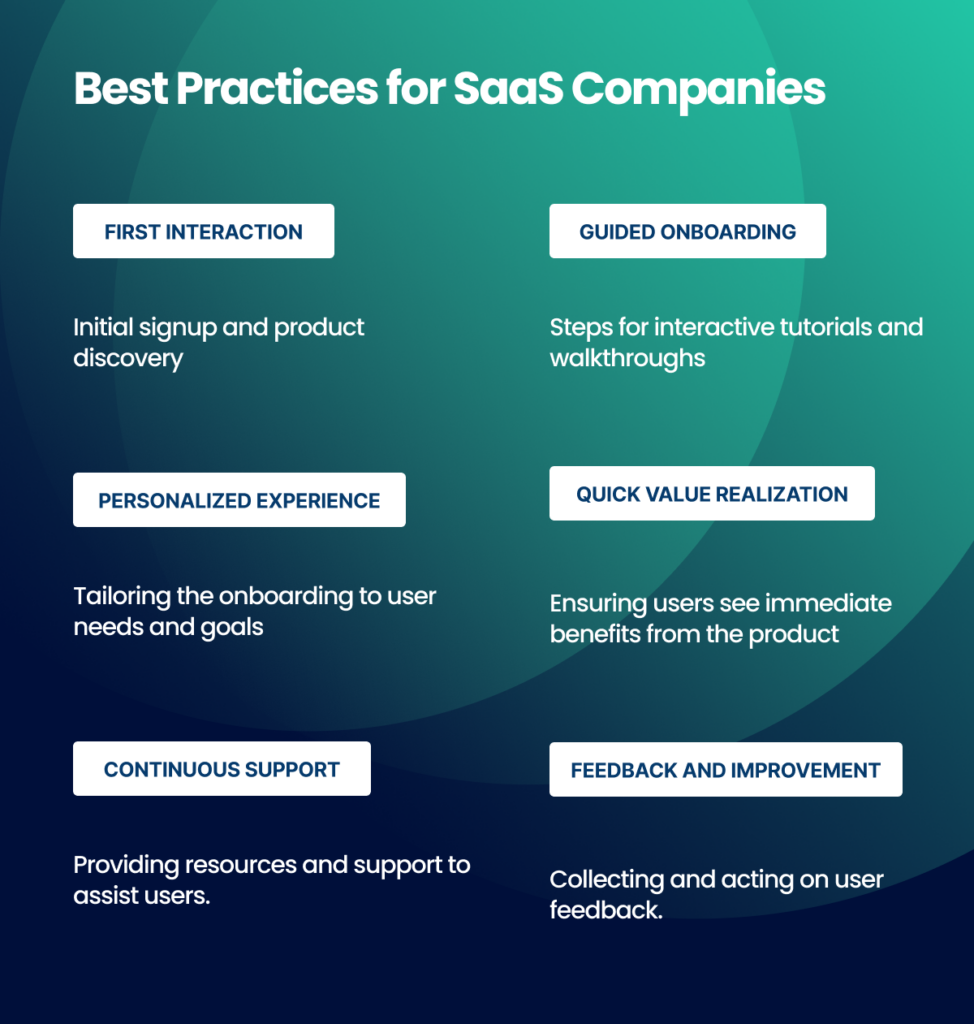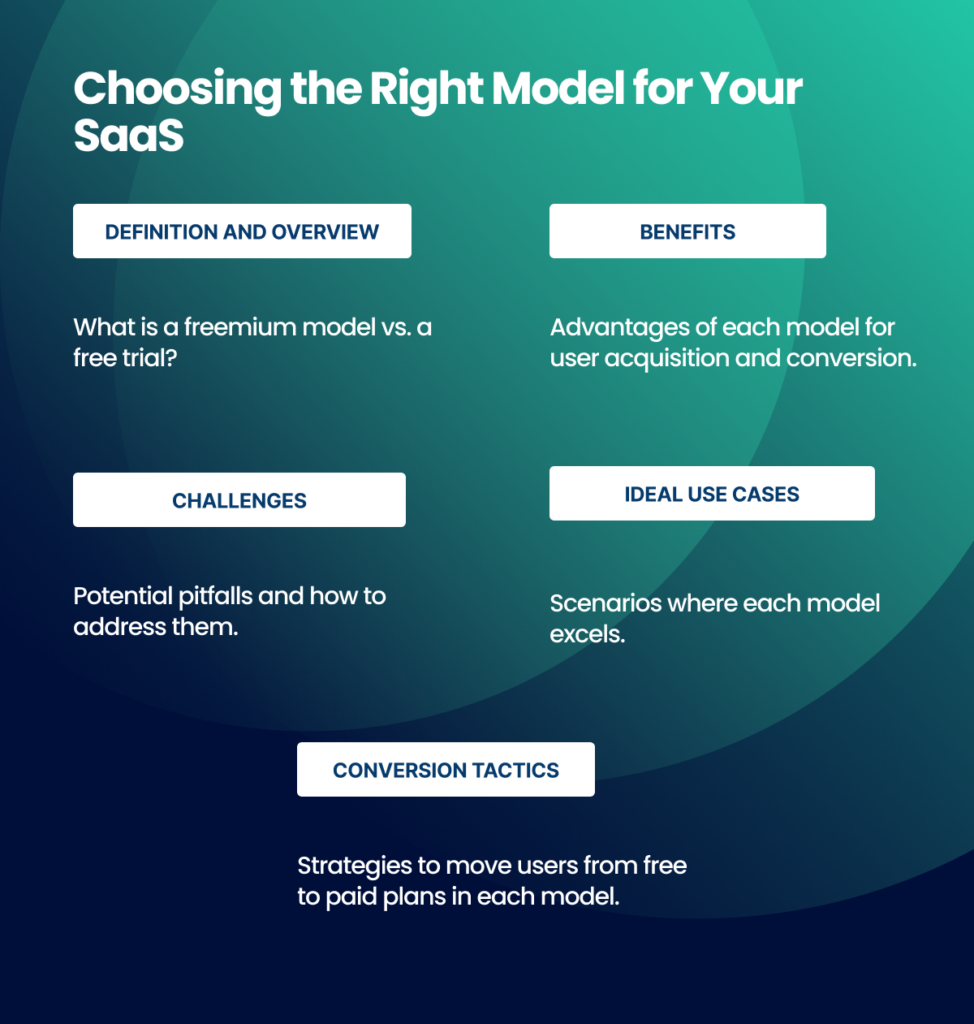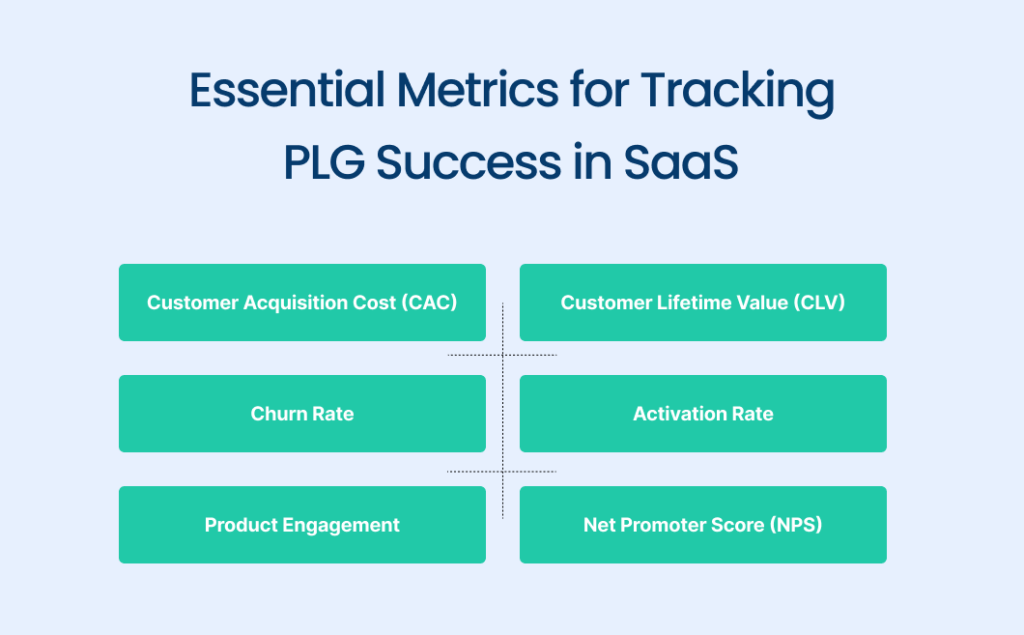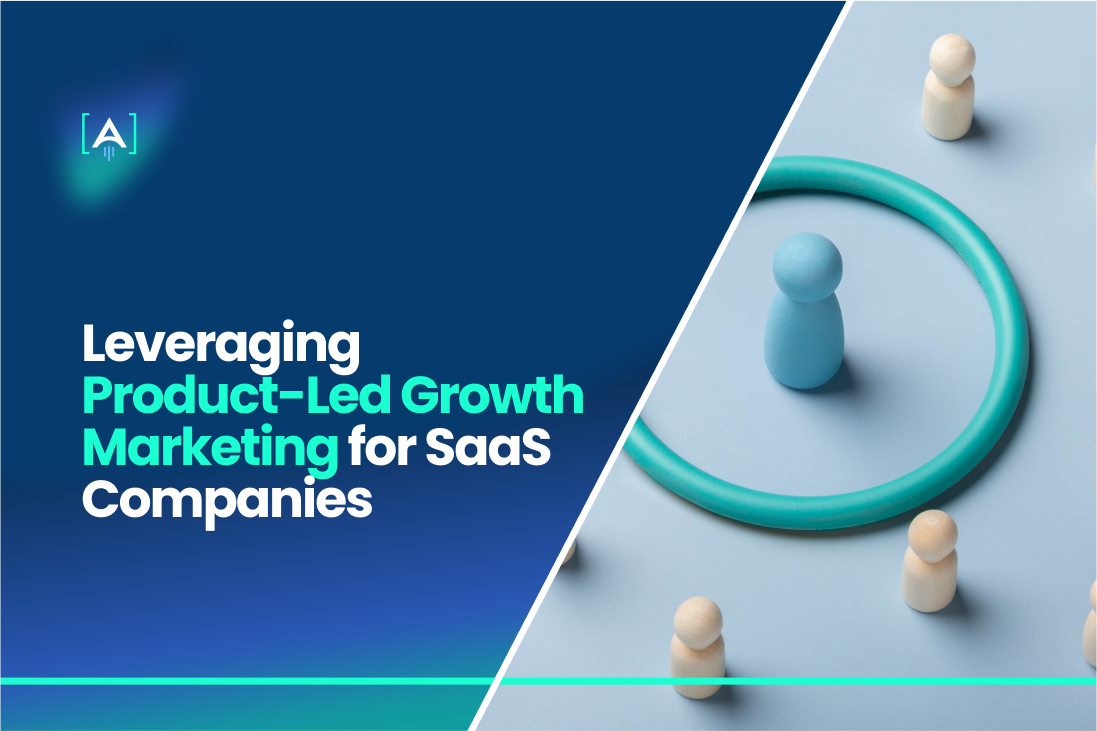In today’s competitive digital landscape, leveraging product-led growth marketing is crucial for SaaS companies. This marketing strategy focuses on using the product as the primary driver for acquisition, retention, and expansion.
Source: Statista
Integrating product experiences into your marketing mix allows you to create compelling marketing strategies and campaigns that resonate with users, driving sustainable growth and a significant market edge.
A Growth marketing agency can greatly benefit the development of the SaaS Company.
Understanding Product-Led Growth (PLG)
What is Product-Led Growth?
Product-led growth (PLG) is a revolutionary marketing approach in which the product drives customer acquisition, expansion, and retention.
Unlike traditional strategies that rely heavily on sales teams and demand generation through digital marketing and social media marketing, PLG places the product at the core of the growth engine. This means the product is designed to sell itself by delivering value that users can immediately experience and appreciate.

By focusing on creating an intuitive and engaging product experience, companies encourage users to become advocates, leading to organic growth and higher customer acquisition rates.
At its essence, product-led growth marketing leverages the product’s usability and value proposition to attract and retain customers. This strategy aligns perfectly with the modern SaaS environment, where users often prefer to try before they buy, making self-service models and freemium offerings particularly effective.
The adoption of PLG signifies a shift from traditional top-down sales approaches to a more customer-centric model, where the product’s performance and user experience directly influence business growth.
In a PLG model, the product is not just a tool but a vital marketing mix component. It serves as a primary channel for demand generation and retargeting, providing tangible proof of value that can be measured and optimized continuously.
This approach aligns well with the data-driven nature of growth marketing, allowing for precise tracking of user behavior and engagement.
Key Principles of Product-Led Growth

User-Centric Design and Experience
The foundation of product-led growth marketing is a deep focus on the user experience. The product must be designed with the end-user in mind, offering a seamless and intuitive journey from first interaction to long-term engagement.
This involves understanding user pain points, preferences, and behaviors to create a product that meets and exceeds their expectations.
AI marketing tools can play a crucial role here, providing insights into user behavior and preferences that can be used to personalize and enhance the product experience.
Freemium Models and Free Trials
PLG often leverages freemium models or free trials to lower the barrier to entry for potential customers. By offering a portion of the product’s value at no cost, companies allow users to experience the product firsthand without any financial commitment.
This approach builds trust and demonstrates value, which can lead to a smoother transition from free to paid subscriptions. Effective AB testing can help refine these models, ensuring they attract and convert users efficiently.
Data-Driven Decision Making
A core principle of PLG is the reliance on data to inform decisions. By continuously collecting and analyzing data on how users interact with the product, companies can identify opportunities for improvement and innovation.
This data-driven approach enables AB testing of new features or changes, allowing for iterative product enhancement based on real user feedback and behavior.
This aligns closely with growth marketing practices, where data and metrics are used to drive strategy and optimize outcomes.
Built-In Virality
PLG products are often designed with built-in mechanisms that encourage sharing and referrals. These features can facilitate collaboration (like document sharing or team projects) or incentivize users to join.
By embedding virality into the product, companies can leverage their existing user base to drive new customer acquisition, reducing reliance on traditional sales teams and social media marketing campaigns.
Customer Feedback and Iteration
Continuous improvement is a hallmark of PLG. Gathering user feedback through surveys, reviews, and usage data is essential for understanding their needs and preferences. This feedback loop allows companies to iterate rapidly on their product, introducing enhancements and new features that keep users engaged and satisfied.
Incorporating customer feedback ensures that the product evolves in line with user expectations, fostering loyalty and long-term retention.
Benefits of Adopting a PLG Strategy for SaaS Companies
- Lower Customer Acquisition Costs։ One significant advantage of product-led growth marketing is its potential to lower customer acquisition costs (CAC).
Companies can reduce spending on traditional marketing and sales activities by allowing the product to serve as the primary means of attracting and converting customers.
Freemium models and self-service trials can attract many users with minimal upfront costs, creating a more cost-effective path to customer acquisition.
- Higher Conversion Rates։ Products central to a PLG strategy often boast higher conversion rates.
This is because users have already experienced the product’s value before making a purchase decision. When users see the product’s benefits firsthand, they are more likely to convert to paying customers.
Additionally, AB testing can help optimize the onboarding process and trial experience, enhancing conversion rates.
- Improved User Retention and Loyalty։ By focusing on delivering exceptional user experiences, PLG strategies can significantly improve retention rates. When users find the product valuable and easy to use, they are likelier to continue using it over time.
This approach also fosters stronger customer loyalty, as users feel more connected to a product that consistently meets their needs and exceeds expectations. Retention is further supported by ongoing engagement through product updates and enhancements, which are informed by continuous data analysis and customer feedback.
- Scalability and Flexibility։ PLG strategies are inherently scalable, making them ideal for SaaS companies looking to grow rapidly. As the product is the primary driver of growth, companies can scale their user base without a proportional increase in marketing and sales expenses.
This scalability is particularly advantageous in digital markets, where companies can quickly expand their reach and impact. Furthermore, the flexibility of PLG allows companies to adapt to changing market conditions and customer preferences, ensuring sustained growth and relevance.
- Enhanced Product and Market Fit։ The iterative nature of PLG helps ensure that the product continuously evolves to meet market demands. Companies can refine their product to align more closely with customer needs by monitoring user interactions and gathering feedback.
This constant alignment with user expectations enhances the product-market fit, making the product more competitive and attractive in the marketplace. AI marketing tools can aid this process by providing deeper insights into user behavior and preferences and guiding product development efforts.
- Empowered Sales and Marketing Teams: While PLG reduces reliance on traditional sales and marketing efforts, it doesn’t eliminate the need for these functions.
Instead, it empowers sales teams and marketers to focus on higher-value activities, such as nurturing leads generated through the product and creating targeted digital marketing campaigns to support growth.
The data-driven insights gained from the product can also inform more effective retargeting and personalized marketing strategies, enhancing the overall efficiency and impact of these teams.
- Leveraging AI and Automation for Efficiency: Integrating AI marketing and automation tools is key to successful PLG strategies. AI can analyze vast data to uncover patterns and predict customer behavior, enabling more personalized and efficient marketing efforts.
Automation tools can streamline repetitive tasks, such as onboarding and customer support, freeing resources to focus on strategic initiatives.
These technologies enhance the user experience and drive operational efficiency, contributing to sustained growth.
- Building a Community of Advocates: A well-executed PLG strategy can turn users into advocates who actively promote the product to others. Companies can encourage word-of-mouth referrals and organic growth by delivering value and an outstanding user experience.
Features facilitating collaboration and sharing amplify this effect, creating a community of engaged and loyal users contributing to the product’s success.
This community-driven growth is a powerful testament to the effectiveness of PLG in fostering long-term customer relationships.
Implementing Product-Led Growth in SaaS
Product-Led Growth (PLG) is a transformative approach that empowers SaaS companies to leverage their product as the primary driver of customer growth and startup growth.
Implementing PLG effectively requires strategic alignment between the product and marketing goals, seamless user onboarding, and continuous enhancement of the user experience.
By focusing on these areas, SaaS companies can create a powerful retention strategy, foster long-term user engagement, and drive sustainable growth.
Aligning Your Product and Marketing Goals
Aligning your product and marketing goals is crucial to successfully implementing product-led growth marketing. This alignment ensures that the product development and marketing managers work towards the same objectives, creating a unified strategy that drives growth.
Marketing teams must deeply understand the product’s value proposition and how it resonates with the target audience. This understanding enables them to craft marketing campaigns that effectively communicate the product’s benefits and attract potential users.
Aligning goals also means integrating content and inbound marketing into the product. For instance, embedding educational content, tutorials, and value-driven messaging within the product can enhance user engagement and encourage exploration of its features.
Additionally, aligning product and marketing efforts helps create a cohesive brand strategy that reflects the product’s strengths and resonates with the market. This strategy fosters stronger connections with users and enhances customer lifetime value (CLV).
Creating a Seamless User Onboarding Experience
A seamless user onboarding experience is fundamental to product-led growth marketing. The marketing agency onboarding process is the first interaction new users have with your product, and it plays a critical role in shaping their initial impressions and driving customer growth.
Effective onboarding helps users quickly understand the product’s value, guiding them to achieve their first success with minimal friction.
Importance of Onboarding in PLG
Onboarding is vital in retention as it sets the stage for user engagement and long-term loyalty. In the context of PLG, onboarding is about introducing users to the product and ensuring they experience its core value as quickly as possible.
This immediate value realization is essential for converting trial users into paying customers and fostering retention. When users see how the product addresses their needs and provides tangible benefits from the outset, they are more likely to continue using it and explore its full capabilities.
Effective onboarding also reduces the learning curve associated with complex products, minimizing user frustration and drop-off rates. By making the initial experience intuitive and rewarding, companies can build a strong foundation for ongoing user engagement and satisfaction.
Best Practices for User Onboarding
To create a successful onboarding process, consider incorporating the following best practices:
- Simplify the User Journey: Break down the onboarding process into manageable steps that guide users through the essential features and functionalities.
Use interactive walkthroughs, tooltips, and checklists to provide clear instructions and highlight key actions. - Personalize the Experience: Tailor the onboarding journey to individual users based on their goals, preferences, and behavior.
Personalization can be achieved through AI marketing tools that analyze user data and customize the onboarding flow accordingly. - Highlight the Core Value Proposition: Focus on demonstrating the product’s core value early in onboarding.
Use real-life use cases, success stories, and tangible examples to show how the product can solve user problems and deliver benefits. - Provide Continuous Support: Offer ongoing support and resources, such as tutorials, FAQs, and customer support channels, to help users navigate the product and overcome any challenges.
- Gather User Feedback: Implement feedback loops to collect user input during and after onboarding. This feedback can be used to identify pain points, refine the onboarding experience, and improve overall user satisfaction.
Leveraging Freemium Models and Free Trials
Freemium models and free trials are powerful tools in product-led growth marketing that lower the barrier to entry and attract a large user base.
By offering a portion of the product’s value for free, companies can showcase their product’s capabilities and build trust with potential customers.
Choosing the Right Model for Your SaaS
Selecting the appropriate model—freemium or free trial—depends on your product, target audience, and business goals.

- Freemium Model: In a freemium model, users can access a basic version of the product for free, with the option to upgrade to a premium version for additional features and benefits. This model is ideal for products that clearly distinguish between basic and premium functionalities and can drive user growth through network effects and word-of-mouth.
- Free Trial: A free trial offers the full product experience for a limited time, allowing users to explore all features before committing to a paid plan. This model works well for products that need to demonstrate their full value to convert users and can provide a compelling case for upgrading once the trial period ends.
Optimizing the Conversion Funnel from Free to Paid
Converting free users into paying customers is a critical aspect of product-led growth marketing. To optimize this conversion funnel, consider the following strategies:
- Engage and Educate Users: Use content marketing and event marketing to engage users and educate them about the benefits of upgrading to a paid plan. Webinars, tutorials, and case studies can highlight advanced features and real-world applications.
- Offer Incentives for Upgrading: Provide incentives, such as discounts, exclusive features, or extended trials, to encourage users to move from free to paid plans. Highlight the value of premium features and how they enhance the overall user experience.
- Utilize AI ROI Analytics: Leverage AI tools to analyze user behavior and identify the most promising upgrade opportunities. AI marketing can help personalize upgrade offers based on user activity and preferences, increasing the likelihood of conversion.
- Implement ICE Scoring: Use the ICE scoring method (Impact, Confidence, Ease) to prioritize conversion strategies that offer the highest potential impact with minimal effort. This approach ensures that resources are focused on the most effective conversion tactics.
Enhancing User Experience (UX) for Growth
An exceptional user experience (UX) is at the heart of product-led growth marketing. By prioritizing UX, companies can create products that users love and want to share with others, driving organic customer growth and retention strategy.
UX Design Principles that Drive Growth
To design a product that supports startup growth, consider the following UX principles:
- Simplicity: Keep the user interface clean and straightforward, making it easy for users to navigate and find what they need. Avoid clutter and focus on essential features that provide value.
- Consistency: Ensure a consistent design language and user experience across all touchpoints. Consistency builds familiarity and trust, making users feel comfortable and confident using the product.
- Responsiveness: Design for responsiveness to accommodate different devices and screen sizes. A seamless experience across mobile, tablet, and desktop enhances user satisfaction and engagement.
- Feedback: Provide immediate and clear feedback for user actions. Feedback helps users understand the consequences of their actions and guides them toward successful interactions with the product.
Data-Driven Approaches in Product-Led Growth
In the dynamic world of product-led growth marketing, data-driven decision-making is a cornerstone that empowers SaaS companies to optimize their strategies and achieve sustained success. Understanding the deep essence of what is SaaS can be crucial.
Leveraging product usage data allows businesses to gain deep insights into customer behavior, tailor their approaches, and drive impactful outcomes.
This methodology is not just a trend but a necessity in today’s marketing industry, where understanding and responding to user needs can differentiate between success and stagnation.
Utilizing Product Usage Data to Drive Decisions
Product usage data provides invaluable information for driving strategic decisions in product-led growth marketing. This data includes how users interact with the product, which features they use most frequently, and where they encounter challenges or drop-offs.
By analyzing these patterns, companies can identify opportunities to enhance the user experience, streamline the marketing campaign, and innovate product offerings.
For example, if data reveals that a particular feature is underutilized, the sales team and product developers can collaborate to understand why and either improve its functionality or better highlight its value through relationship marketing. Conversely, highly used features can be emphasized in sales promotions and viral marketing efforts to attract new users and retain existing ones.
Additionally, product usage data supports the development of an experimentation roadmap, enabling companies to test hypotheses about user behavior and preferences systematically. This approach aligns with the growth marketing philosophy of continuous improvement through innovative marketing strategies.
By running controlled experiments, such as A/B testing, businesses can iterate on their product and marketing tactics based on empirical evidence rather than intuition alone. This iterative process is crucial for refining the business model and ensuring that each decision contributes positively to growth metrics.
Key Metrics to Track for PLG Success
To effectively leverage product-led growth marketing, tracking the right metrics is essential. These marketer KPIs provide insights into how well the product performs and where adjustments are needed to drive growth.

Key metrics to monitor include:
- Customer Acquisition Cost (CAC): This metric measures the cost of acquiring a new customer through both paid vs organic channels. Understanding CAC helps businesses evaluate the efficiency of their marketing campaigns and optimize their budget allocation.
- Customer Lifetime Value (CLV): CLV estimates the total revenue a business can expect from a single customer over the course of their relationship. A higher CLV indicates that the product provides sustained value, critical for growth marketing strategies focused on long-term success.
- Churn Rate: The churn rate tracks the percentage of customers who stop using the product over a given period. Lowering churn is vital for relationship marketing and retention efforts, directly impacting the company’s revenue and growth potential.
- Activation Rate: This metric measures how many users reach a significant milestone or derive substantial value from the product shortly after signing up. High activation rates suggest that the onboarding process is effective and that users quickly understand and appreciate the product’s core benefits.
- Product Engagement: Monitoring how often and extensively users interact with the product can reveal its stickiness and overall user satisfaction. Metrics like daily active users (DAUs), weekly active users (WAUs), and feature usage rates indicate engagement levels.
- Net Promoter Score (NPS): NPS gauges customer loyalty and their likelihood to recommend the product to others. It is a key indicator of user satisfaction and potential for organic growth through viral marketing.
Tools and Technologies for Data Analysis
Utilizing advanced tools and technologies is critical for harnessing the power of data in product-led growth marketing. These tools enable companies to collect, analyze, and act on data effectively, driving informed decisions that support growth.
- Product Analytics Platforms: Tools like Mixpanel, Amplitude, and Heap provide detailed insights into user behavior, allowing businesses to track feature usage, user flows, and conversion rates.
These platforms help identify which parts of the product resonate with users and which areas need improvement. - Customer Relationship Management (CRM) Systems: Solutions like Salesforce and HubSpot CRM integrate with product usage data to provide a holistic view of the customer journey.
CRM systems facilitate relationship marketing by tracking interactions and helping tailor engagement strategies to individual users. - A/B Testing Tools: Tools such as Optimizely and VWO support experimentation roadmaps by enabling companies to test different versions of their product features or marketing messages.
A/B testing is essential for refining user experiences and maximizing conversion rates. - Marketing Automation Software: Platforms like Marketo and Mailchimp automate repetitive marketing tasks, such as email campaigns and customer segmentation, based on user behavior data.
Automation enhances efficiency and ensures that marketing efforts are timely and relevant. - AI and Machine Learning Solutions: Leveraging AI and machine learning technologies can uncover hidden patterns in large datasets, predict user behavior, and personalize marketing efforts.
AI tools help optimize AI ROI by providing actionable insights that drive strategic adjustments. - Data Visualization Tools: Tools like Tableau and Looker transform complex data into visual insights that are easy to understand and act upon. Data visualization supports growth marketing agencies in communicating findings and making data-driven decisions quickly.
- Heatmaps and Session Replay: Tools like Hotjar and Crazy Egg visualize how users interact with web pages, highlighting areas of interest and frustration. These insights are valuable for optimizing user interfaces and enhancing the overall user experience.
Predictions for the Evolution of PLG in SaaS
Product-Led Growth (PLG) is set to revolutionize the future of SaaS marketing, particularly in the b2b SaaS sector. As companies increasingly recognize the importance of a product-first approach, PLG strategies will evolve to prioritize even deeper integration of data analytics, AI, and machine learning technologies.
These advancements will enable SaaS businesses to create highly personalized and predictive user experiences, driving engagement and retention.
The future of PLG in SaaS also promises a stronger focus on customer-centric innovation. Companies will continually refine their products based on real-time feedback and usage data, ensuring they remain aligned with evolving customer needs and preferences. This iterative process will be supported by sophisticated SaaS SEO practices, which will help attract and convert high-intent users by making product benefits easily discoverable through organic search.
Moreover, as the competitive landscape intensifies, B2B SaaS companies will leverage PLG to differentiate themselves by offering exceptional user experiences right from the onboarding stage.
The freemium and free trial models will become even more prevalent, lowering barriers to entry and allowing potential customers to experience the product’s value before making a purchase decision. This approach will be critical in driving customer acquisition and reducing churn rates.
Collaboration between sales and product teams will deepen, focusing on leveraging product data to enhance user engagement and conversion strategies. This shift will lead to more integrated and holistic marketing efforts, where every touchpoint in the customer journey is optimized for growth.
In addition, PLG will drive the adoption of community-building strategies, fostering loyal user communities that can significantly contribute to product innovation and viral growth through advocacy and referrals. Saas marketing will increasingly rely on these engaged user bases to amplify product reach and credibility.
Ultimately, the evolution of Product-Led Growth in SaaS will lead to products that meet and exceed customer expectations, creating sustainable growth engines that drive long-term success. By aligning their SaaS marketing strategies with PLG principles, companies will be well-positioned to thrive in the rapidly changing SaaS landscape, making PLG a cornerstone of future business models and growth strategies.
Questions to Ask Growth Agency
When onboarding a growth marketing agency, it’s crucial to ask questions that ensure they can effectively leverage data-driven approaches for product-led growth marketing. Key questions include:
- How do you integrate product usage data into your growth strategies?
- What tools and technologies do you use for data analysis and visualization?
- Can you provide examples of successful marketing campaigns driven by data insights?
- How do you prioritize and test hypotheses within your experimentation roadmap?
- How do you measure and optimize customer acquisition costs across paid vs. organic channels?
- What is your approach to relationship marketing and customer retention?
- How do you ensure continuous improvement in user engagement and satisfaction?
- How do your strategies align with our business model and goals?
Addressing these questions can help you select a marketing agency that aligns with your data-driven vision and effectively supports your product-led growth marketing objectives.
Partner with [A] Growth
Staying ahead of the competition for SaaS requires a strategic partner who understands the nuances of product-led growth marketing and can tailor solutions to your unique needs.
At [A] Growth Agency, we use innovative, data-driven strategies to drive scalable and sustainable growth for SaaS companies.
As a SaaS marketing agency, our deep expertise in SaaS marketing enables us to craft bespoke strategies that align with your business objectives and target audiences.
Your SaaS growth story starts here.

